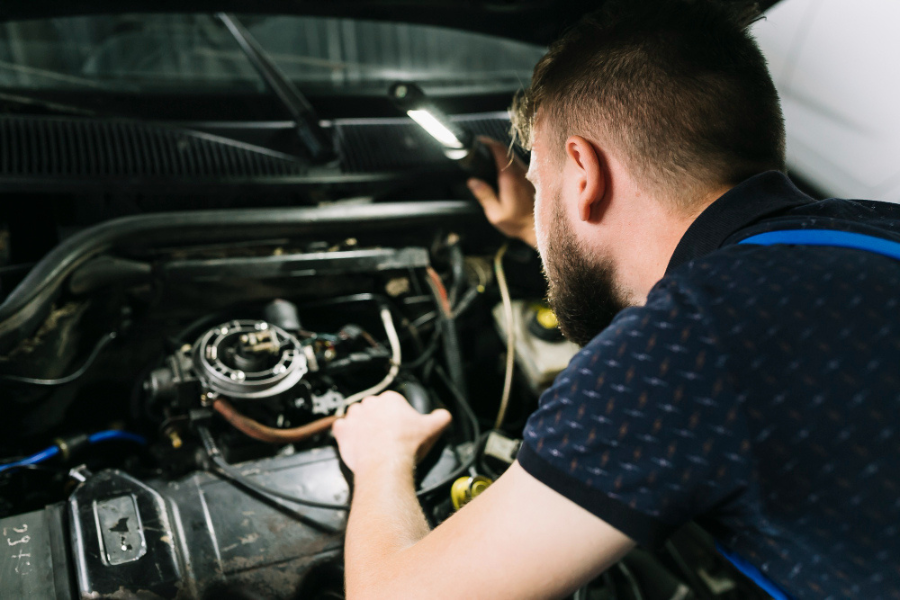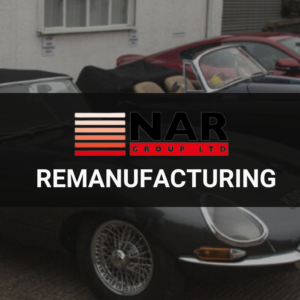Classic cars are a lifelong love affair that provides us with a nostalgic and poignant journey through the history of automotive engineering. Still, the upkeep of classic cars often requires addressing common mechanical issues such as radiator failure.
Providing proper upkeep and maintenance for your classic car is paramount to spending more time on the road driving and less time fixing and repairing. As radiator failure can be such a common issue in classic cars in this blog we will explore the causes of radiator failure, signs to watch out for indicating the need for replacement, and tips on proper radiator maintenance.
Cause of Radiator Failure
Radiators are the heart of your car’s cooling system. They circulate coolant around the engine to pick up heat and carry it away from the internal components of the car, releasing it into the air. This is necessary to ensure the materials and parts of the engine can continue to move freely without expanding too much and causing the engine to seize.
A radiator will fail for a few reasons:
- Corrosion: If not maintained properly the radiator can degrade due to corrosion, especially if the coolant is not changed regularly. As the inside of the radiator corrodes, little pieces can break off and begin to get stuck leading to blockages which reduce the efficiency of the radiator at cooling the engine.
- Physical Damage: Throughout its life, a classic car will wear down through physical damage. This can be caused by accidents, dirt and gravel kicked up from the road, or mishandling of components during maintenance. Physical damage can puncture hoses, create cracks, and weaken the radiator in many ways, and through this damage, coolant can leak and reduce the engine’s ability to cool itself.
- Ageing Materials: Probably one of the most common issues is the older materials used in classic cars deteriorating over time. Copper and brass are common in old radiators and these metals are less resilient to high temperatures, temperature fluctuations and environmental changes, which can lead to their deterioration over time.
- Sediment Build-Up: Another form of blockage can come from sediments and mineral deposits from the coolant accumulating inside the radiator. As these sediments accumulate, they can block the radiator reducing its ability to cool and causing radiator failure.
How to Know if a Radiator Needs Replacing
Now we understand some of the factors that contribute to radiator failure, what signs should we look out for to know if our radiator needs repairing or replacing?
- Overheating Engine: One of the most obvious signs will be an engine that is constantly overheating. If the temperature gauge is showing high readings or the engine is emitting steam whilst running then this could be a definitive sign of radiator failure.
- Coolant Leaks: If there is a leak it will be visibly pooling under the car when left to stand for some time. You may find coolant leaking into the engine bay and gathering on the floor. As the coolant level lowers the car’s ability to cool is compromised, eventually leading to radiator failure.
- Discoloured Coolant: Rusty or discoloured coolant is a sign of corrosion within the radiator. Coolant is colour-coded based on the additives and particular vehicles it should be used on. If the coolant is not its regular colour or has turned the colour of rust, this is a clear indicator that sediment has built up inside the radiator.
- Frequent Coolant Top-Ups: If you find yourself constantly refilling your coolant levels, this is another clear indicator that there is a leak somewhere and the radiator needs repairing or replacing.
- Visible Damage: Performing frequent inspections on your car is always recommended to check for signs of visible damage. If you have any bent fins or punctures, then the radiator has been compromised and wants to be repaired and maintained as soon as possible.
Radiator Maintenance
To prolong the life of our classic cars and their radiators then proper and frequent maintenance is a must. Here are some of our top tips for maintaining your classic car’s radiator and increasing the longevity of your car.
- Regular Coolant Changes: Change the coolant at regular intervals, as per the manufacturer’s guidelines. Ensuring fresh clean lubricant for your car’s radiator ensures the lubrication and cooling effects are always at their peak, reducing the possibility of sedimentary buildup and corrosion, and ensuring your radiator continues to run smoothly.
- Inspect for Leaks: Take the time to regularly check for coolant leaks around the radiator and hoses. Addressing leaks as you find them can prevent bigger problems from arising down the road.
- Flush the Radiator: Flushing the radiator regularly helps to remove sediment and mineral deposits and reduce the risk of build-ups and blockages.
- Use the Right Coolant: Always ensure you are using the recommended coolant type for your classic car as using the wrong type can cause chemical reactions that lead to corrosion and internal damage.
Our Services
At NAR Group, we specialise in the restoration and maintenance of classic car radiators using decades of expertise and state-of-the-art facilities. Our expert team provides a range of services to help you keep your classic car on the road:
- Radiator Replacement: We offer high-quality replacement radiators for an extensive range of classic cars. Our replacements are designed to match the original specifications, ensuring perfect fit and function.
- Radiator Repair: Our skilled technicians can repair minor damage to radiators, addressing issues like leaks and minor dents.
- Radiator Restoration: For those vintage enthusiasts and purists who wish to maintain the originality of their cars, we provide restoration services that refurbish existing radiators to their original glory.
- Coolant System Check: We can perform a comprehensive check on the entire cooling system, including hoses, pumps and thermostats and give you a full breakdown on the best course of action to keep your classic car in excellent condition.
Conclusion
As radiators provide a vital function in cooling the car’s engine and keeping your classic car running smoothly, we must maintain our radiators effectively. By understanding the causes of radiator failure, watching out for the signs that indicate a problem, and providing ongoing upkeep and maintenance of your radiator you can keep your classic car in perfect condition and be prepared when things do go wrong.
When in need of a professional we at NAR Group offer a set of specialised services tailored to the needs of classic car owners to keep your vehicle in peak condition.





